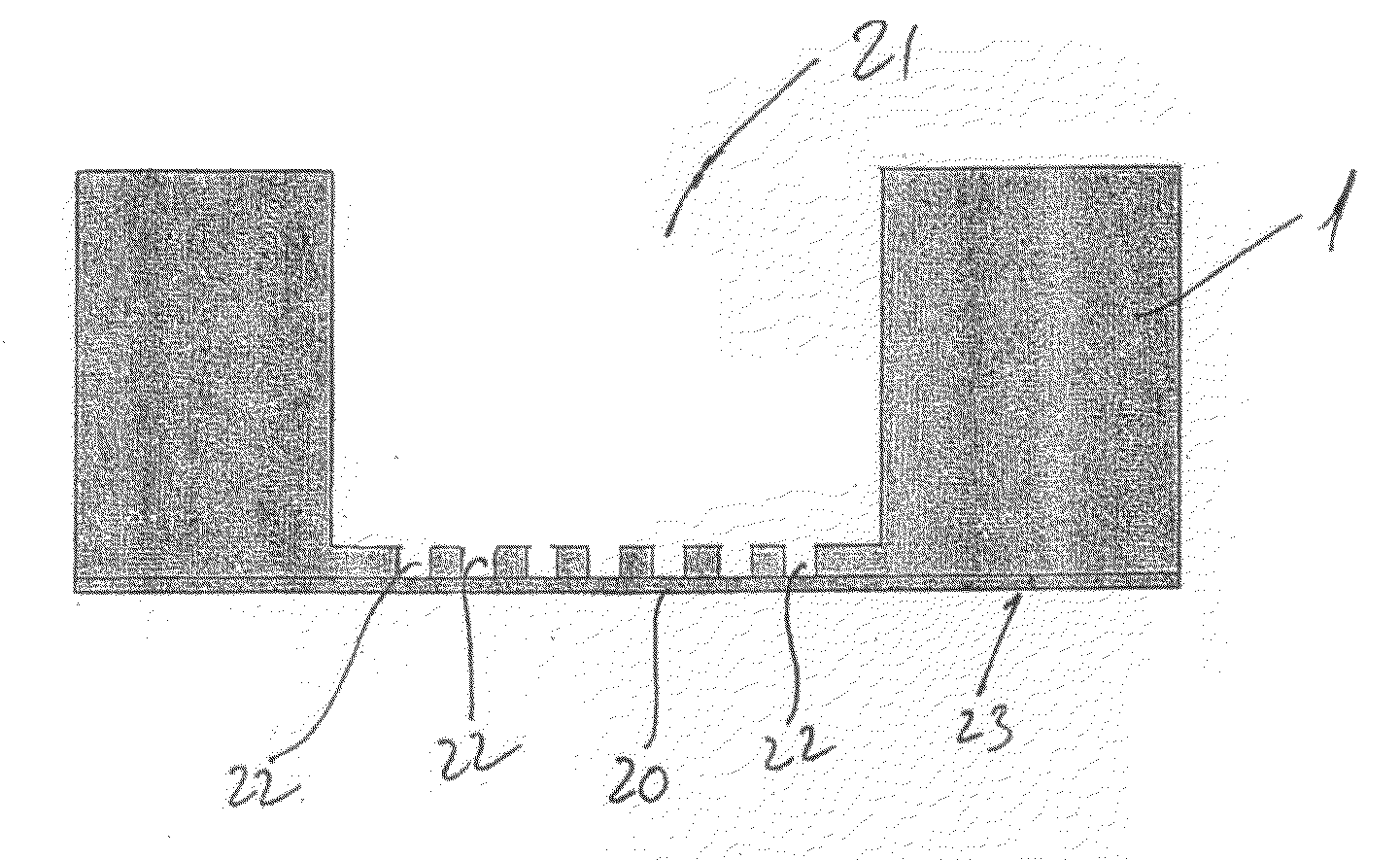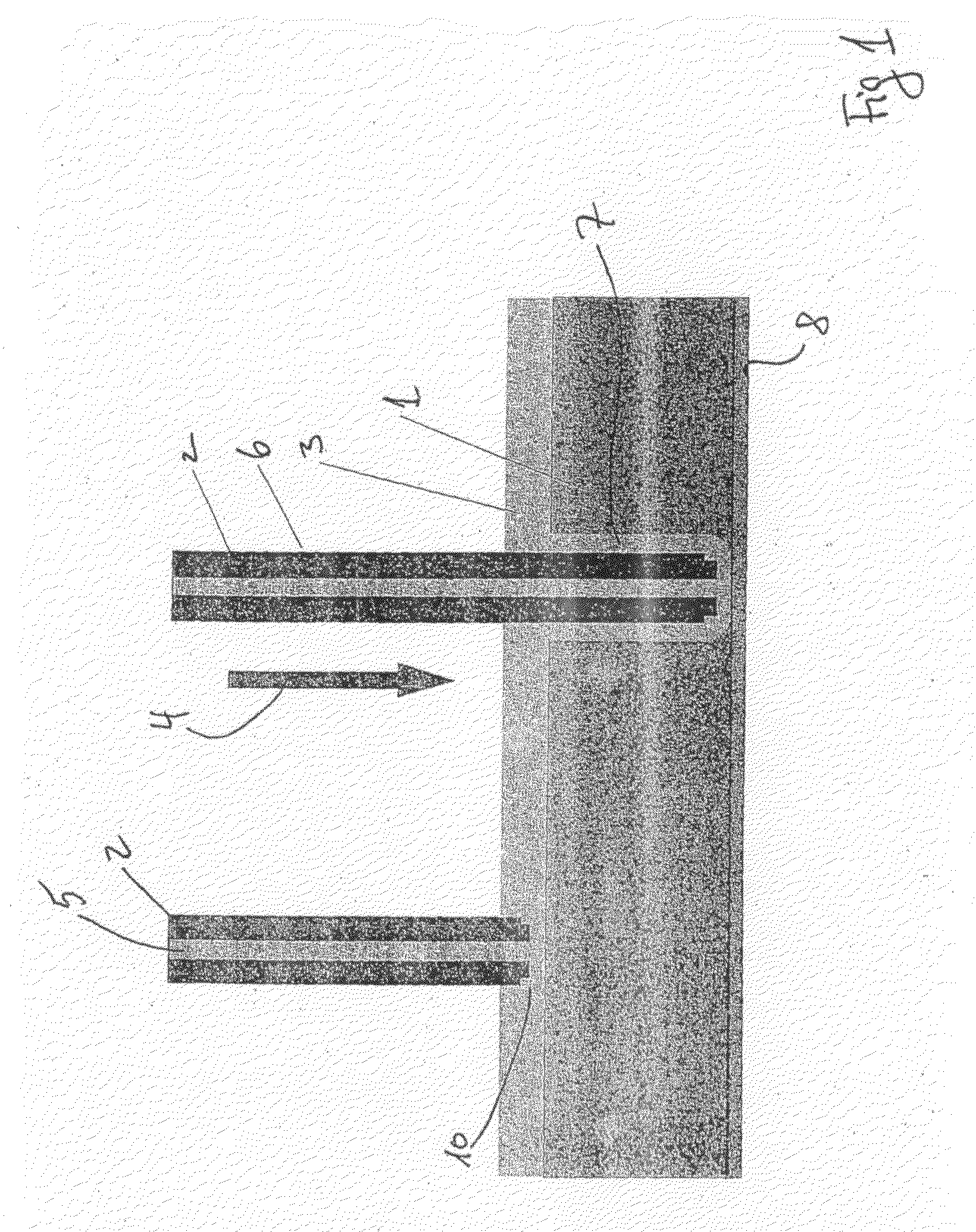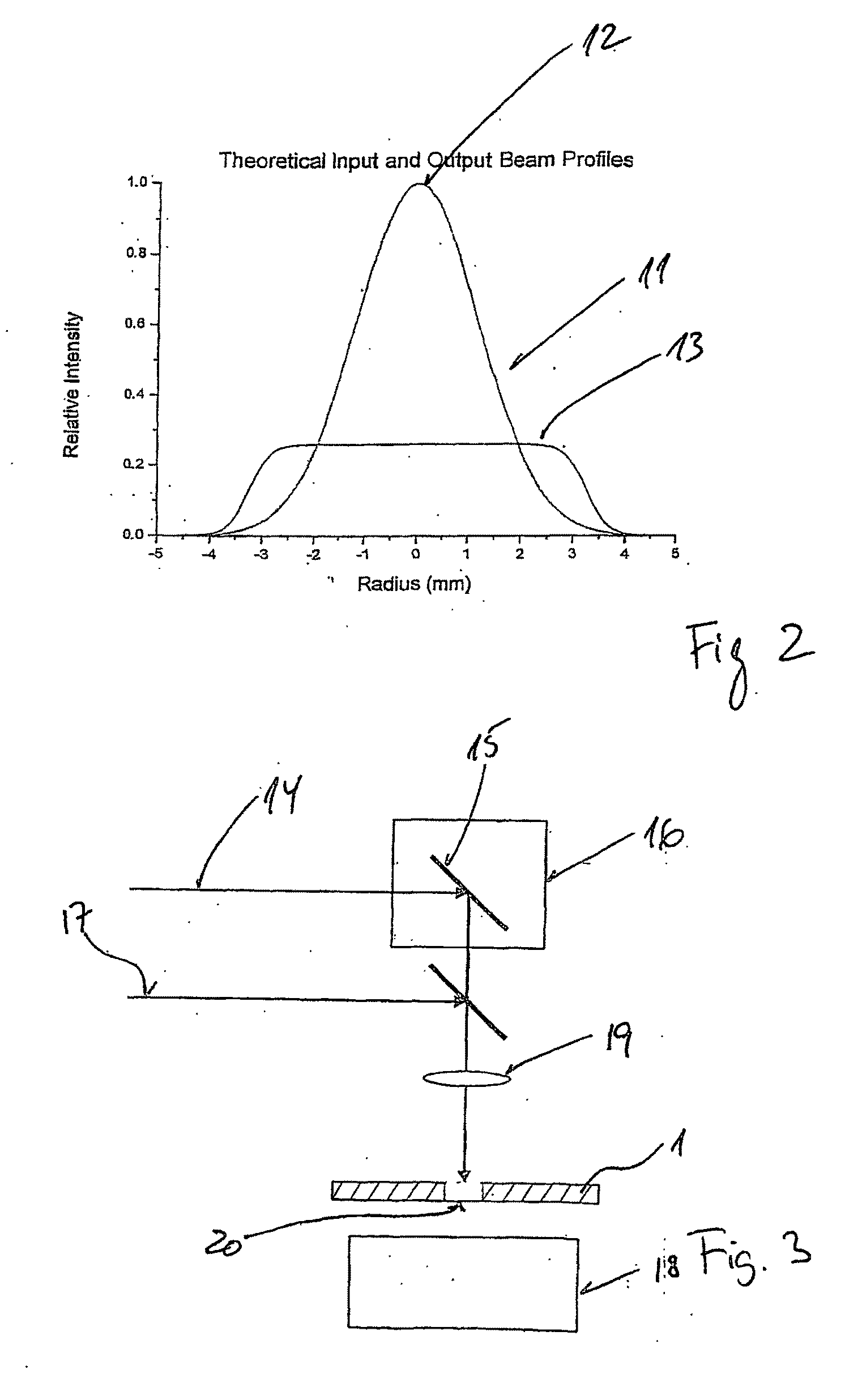Combined electrochemical and laser micromaching process for creating ultri-thin surfaces
- Summary
- Abstract
- Description
- Claims
- Application Information
AI Technical Summary
Benefits of technology
Problems solved by technology
Method used
Image
Examples
Embodiment Construction
[0005]The invention addresses this problem by providing a process for the manufacture of ultra-thin sections in an electrically conducting material, comprising:[0006]firstly removing material in an electrochemical process to a material thickness of approximately 10 to 20 micrometers;[0007]secondly removing further material by a laser micromachining process to a material thickness of 1 to 5 micrometers.
[0008]By combining the two methods it is possible by the electrochemical process quickly to remove a substantial amount of material. The electrochemical process is not as precise and accurate so that it may be possible to solely rely on and use this method in order to create the ultra-thin sections or translucent sections. However, by removing material by an electrochemical process down to a thickness of approx. 10-12 micrometres, enough margin is provided, so that the electrochemical process may be controlled in a manner so that it is satisfied that there is a material thickness left ...
PUM
| Property | Measurement | Unit |
|---|---|---|
| Length | aaaaa | aaaaa |
| Time | aaaaa | aaaaa |
| Time | aaaaa | aaaaa |
Abstract
Description
Claims
Application Information
 Login to View More
Login to View More - R&D
- Intellectual Property
- Life Sciences
- Materials
- Tech Scout
- Unparalleled Data Quality
- Higher Quality Content
- 60% Fewer Hallucinations
Browse by: Latest US Patents, China's latest patents, Technical Efficacy Thesaurus, Application Domain, Technology Topic, Popular Technical Reports.
© 2025 PatSnap. All rights reserved.Legal|Privacy policy|Modern Slavery Act Transparency Statement|Sitemap|About US| Contact US: help@patsnap.com



